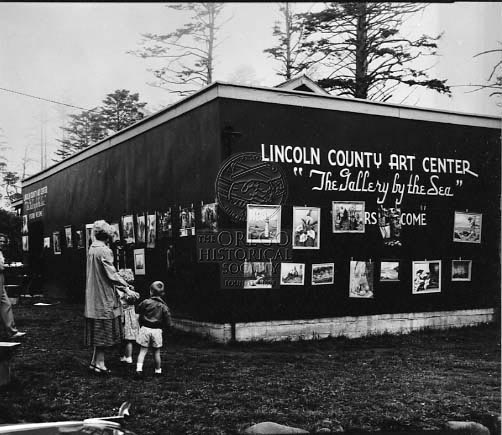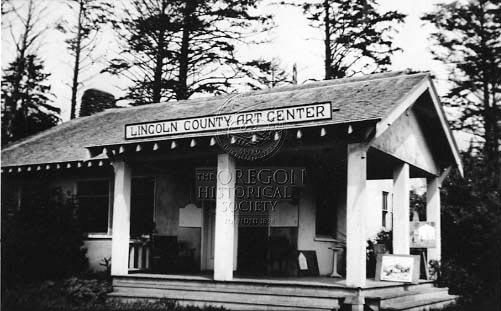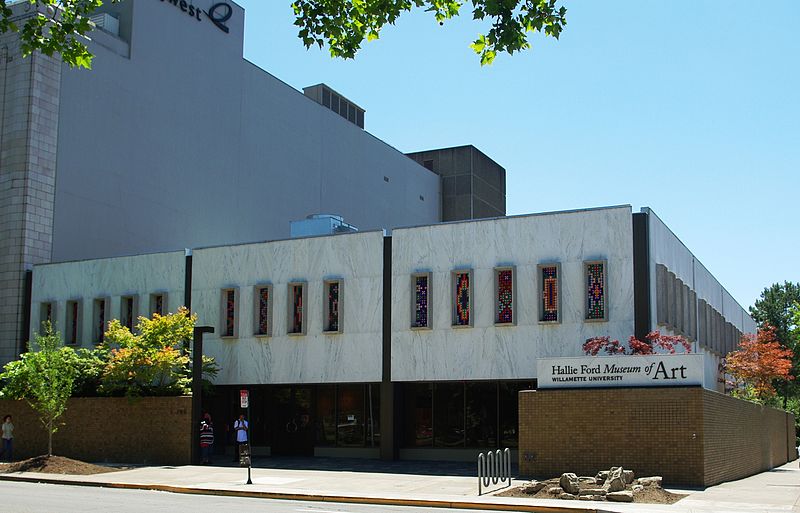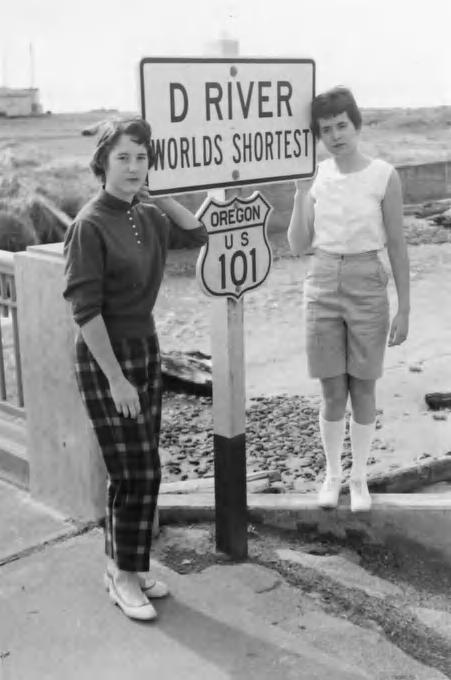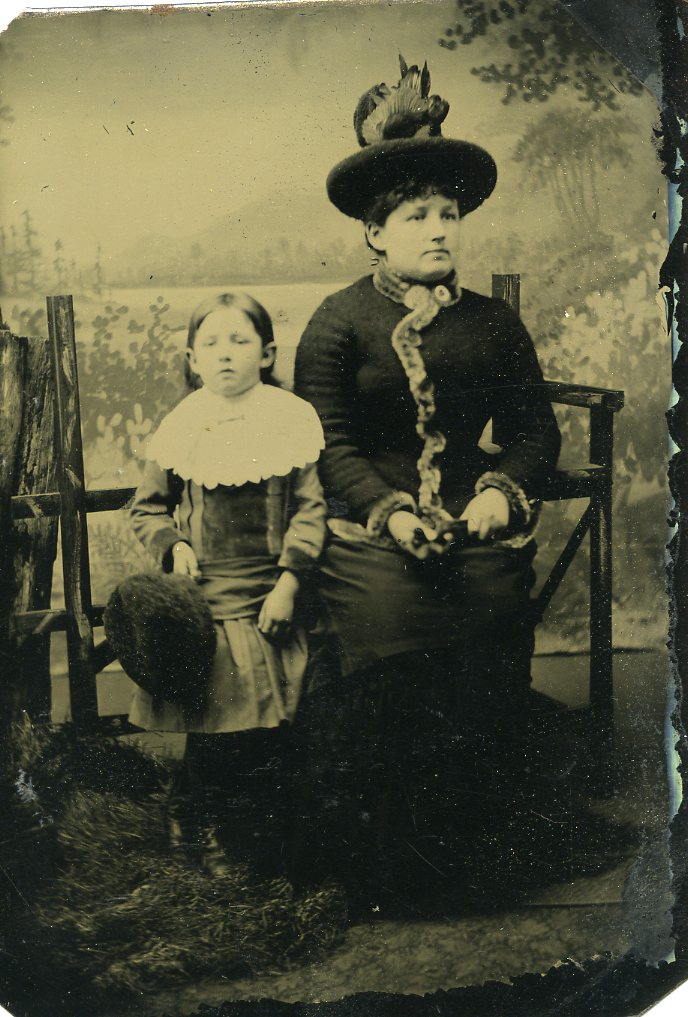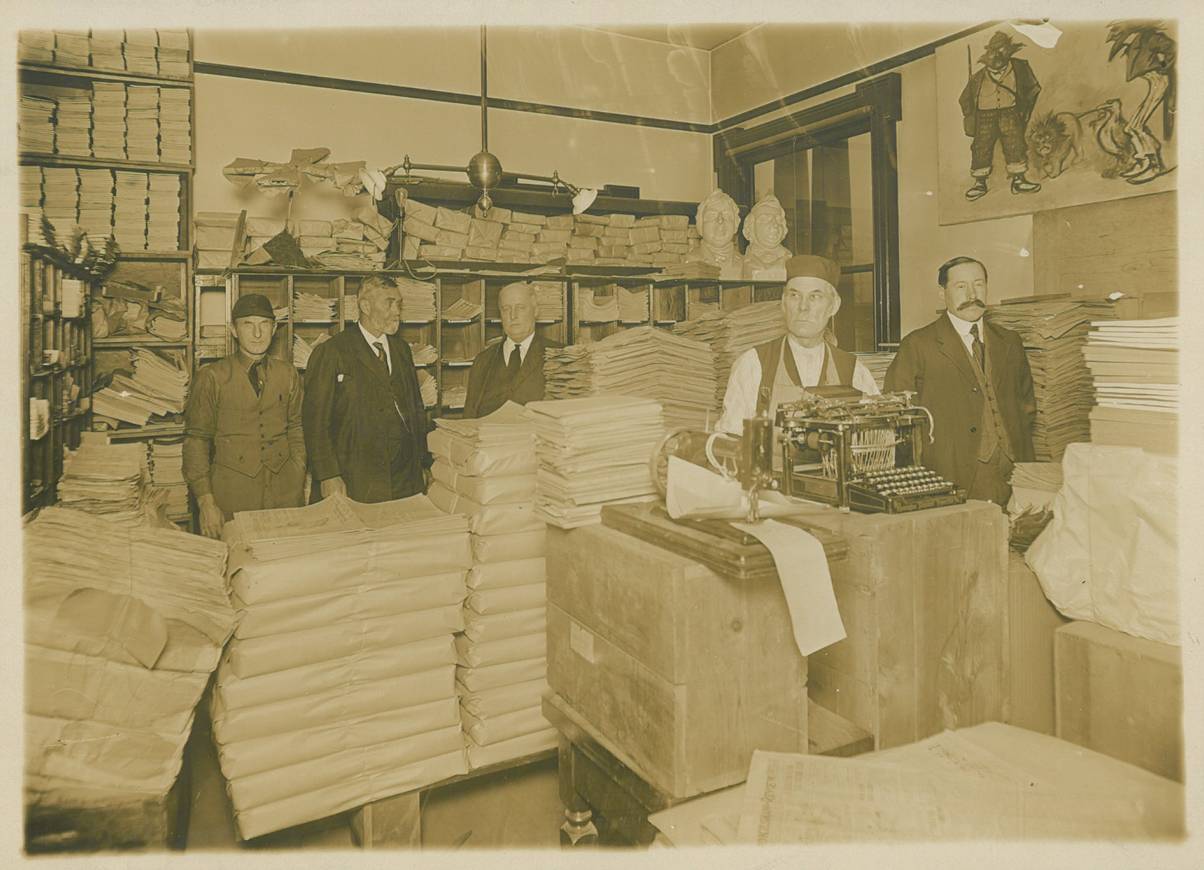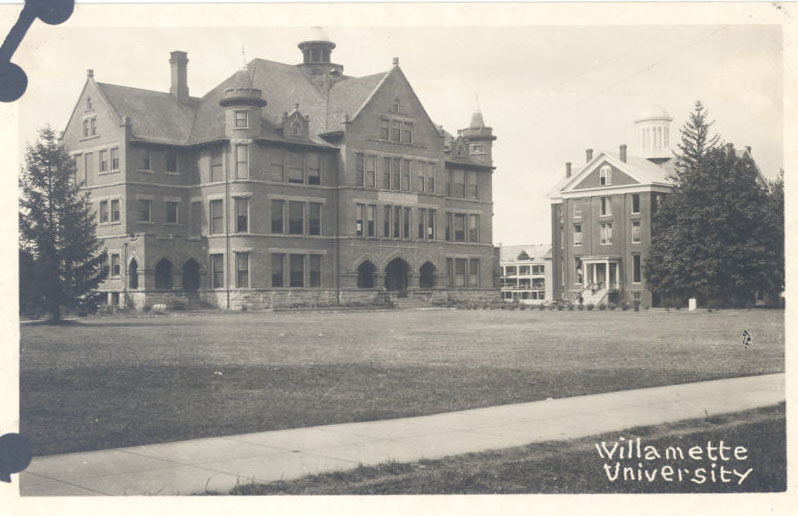Ruth Grover was an artist and arts educator who in the course of her sixty-year career promoted the development of the art scene on the Oregon coast. A skilled watercolorist known for her depictions of ocean beaches and coastal vernacular architecture, she later turned to the wax-based medium of encaustic to create abstract compositions inspired by natural forms, including agates that she collected near her home at Roads End in Lincoln County.
A fifth-generation Oregonian, Ruth Dennis Grover was born in Portland in 1912 and grew up in Detroit, Michigan, where her father, Clarence Grover, manufactured pneumatic tubes. She spent summers in Oregon with her mother, Eva Dennis Grover, but attended the University of Michigan and took courses at several art schools in Detroit, where she studied with the painter Carlos Lopez. In the later 1930s, she worked for her father’s company as a bookkeeper and draftsperson and also found work as a freelance commercial artist in Detroit.
In 1939, after her father’s death, Grover and her mother settled in Wecoma in what is now Lincoln City. In 1944, they moved to nearby Roads Ends, where Ruth lived until her death in 2003. With Maude Walling Wanker, Grover helped develop the Lincoln County Art Center and taught children’s and adult classes there in the 1940s. She was an avid rock collector and participated in agate societies and exhibitions.
In 1952, Grover established Cascade Artists, a cooperative of amateurs and professionals whose work she organized in exhibitions that traveled to community art centers on the coast, throughout western Oregon, and in Idaho, Washington, and California. As the director of Cascade Artists, she also oversaw the operation of a gallery, first at Earl Nelson’s bookstore in Nelscott and then at the Surftides resort in Lincoln City. The group disbanded and the gallery closed in 1978.
As a watercolorist, Grover painted Oregon’s beaches, lighthouses, and wharves, as well as eastern Oregon landscapes. In 1956, she learned of the ancient medium of encaustic, in which pigments are combined with wax, popularized in the United States by the painter Karl Zerbe. A particularly lovely encaustic work by Grover was inspired by the skeleton of the Peter Iredale, the wrecked barque on Clatsop Spit near Warrenton, where it ran aground in 1906. As colorful abstract compositions, Grover’s encaustics align with modern art movements of the mid-century period, whereas her watercolors relate to American regional art of an earlier period.
Grover never married. From the 1960s until the end of her life, she lived with her friend Martha Kay Renfroe (the novelist M. K. Wren). Grover died a few days before her last major exhibition opened at the Visual Arts Center in Newport.
Ruth Grover’s artworks are in private ownership and in the collections of the Oregon Historical Society, Coos Art Museum, Erb Memorial Union (University of Oregon), and Hallie Ford Museum of Art (Willamette University). Her papers are housed in the Pacific Northwest Artists Archive at the Mark O. Hatfield Library at Willamette University. The collection contains correspondence, biographical materials, financial records, photographs of the artist's works, exhibition catalogs and price lists, reviews, and newspaper issues and clippings. Also included are scrapbooks recording the activities of the Cascade Artists.
-
![]()
Lincoln County Art Center, 1950.
Oregon Historical Society Research Library, 007363
-
![]()
Lincoln County Art Center, 1945.
Oregon Historical Society Research Library, Oregon Journal Collection, 001023
Related Entries
-
Hallie Ford Museum of Art
The Hallie Ford Museum of Art at Willamette University has only been in…
-
![Lincoln City]()
Lincoln City
Early in the twentieth century, a string of small beach towns with thei…
-
![Maude Walling Wanker (1882 - 1970)]()
Maude Walling Wanker (1882 - 1970)
Artist Maude Wanker is perhaps best known for her prowess in watercolor…
-
![Oregon Historical Society]()
Oregon Historical Society
The Oregon Historical Society is a private museum, archival library, an…
-
![Willamette University]()
Willamette University
Willamette University, the oldest university in the West, was founded i…
Map This on the Oregon History WayFinder
The Oregon History Wayfinder is an interactive map that identifies significant places, people, and events in Oregon history.
Further Reading
Allen, Ginny and Jody Klevit. Oregon Painters, The First Hundred Years (1859-1959). Portland: Oregon Historical Society Press, 1999.
Grover Papers, Pacific Northwest Artists Archive. Mark O. Hatfield Library, Willamette University, Salem, Oregon.
Hull, Roger. “The Lure of Pacific Northwest Art.” American Art Review 11:1 (Feb. 1999), 168-177.

